By Vanessa Favilla
Accessibility is an increasingly important movement nowadays. The World Health Organisation (WHO) estimates that 1.3 billion people worldwide experience a significant disability. These figures represent 16% of the global population.
Therefore, it is necessary to adopt a more inclusive outlook and recognise that spectacles, cultural shows, and sporting events should also serve as spaces for inclusion, diversity, and welcome. To recognise the importance of accessibility in events, not merely as an implemented tool, but also with the responsibility that everyone, without exception, has the right to enjoy art, culture, and leisure. And when we speak of everyone, we are also referring to people with physical, visual, hearing disabilities, reduced mobility, and people on the autism spectrum, a diverse audience that enriches any crowd.
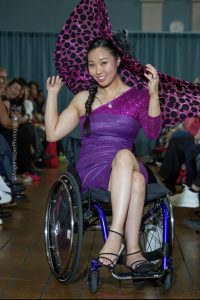
Fashion Week is a unique experience for those passionate about fashion and art. When we add inclusion and diversity to this event, we are not referring to who represents fashion on the catwalks, but the entire context of organising a show that opens its doors to give people with disabilities the opportunity to break the barriers of their limitations and share the same desire: to be part of an inclusive manifestation.
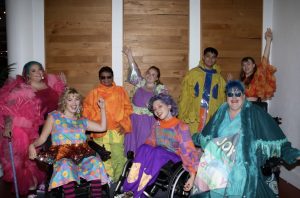
The event, The Future of Fashion, successfully created during London Fashion Week, was a show that combined art, colours, creativity, and an atmosphere of inclusion, involving everyone in a climate of celebration, partnership, and great dedication from all involved. For the event to occur harmoniously, the organisation was very discerning in thinking about accessibility for all participants. Not only did those who looked after fashion prepare to tell a story of inclusion and diversity, but the entire event structure was also designed with the audience in mind, including people with disabilities.
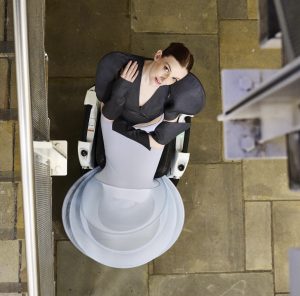
Architectural accessibility, which focuses on the physical space, involves considering a location with access ramps, space for wheelchair users and their companions, lifts for improved logistics in transporting models with physical disabilities, adapted toilets, and even a room to accommodate people with sensory sensitivities during show preparation hours. The team was trained to deliver inclusive service and care with a diverse approach. Welcoming people was also part of the event’s project.
For Samanta Bullock, the project’s creative visionary, every accessibility detail was thoughtfully considered to provide comfort and safety for all involved. Considering that the entire infrastructure of an event is part of the responsibility of ensuring accessibility is for everyone. However, my greatest satisfaction was organising a show where everyone, without exception, could enter through the front door.
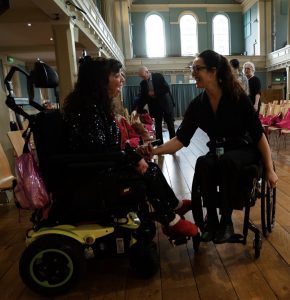
In recent decades, we have witnessed the exponential growth of new technologies, ushering in the era of digital inclusion, where technology and information have become essential, profoundly impacting and redefining modern society. Communicational accessibility has utilised audio description, a resource that enables people with visual disabilities or comprehension difficulties to access real-time event transmissions through a mobile application and headphones. Some devices even apply not only written subtitles, but also narrations, where immersion in the scenario is as possible to describe as everything.
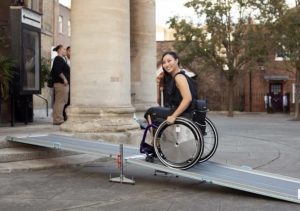
Be Play also implemented the Communication Accessibility platform at the “The Future of Fashion” event. For Luis Mauch, partner and director of the company, implementing accessibility in the technology area is an expanding field. He had the opportunity to implement an accessibility system for event transmissions, including the World Cup, Olympics, Paralympics, Formula 1, and the FIFA Club World Cup, in partnership with a cable television broadcaster and one of Brazil’s largest telecommunications companies. In return, he sees that accessibility has shown it is under construction and that today inclusion and diversity are part of something even greater, allowing everyone, regardless of socioeconomic conditions, age, location, or abilities, to participate in events and live in equality.
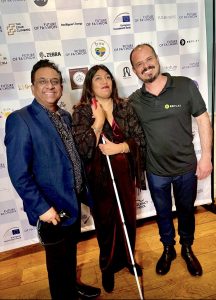
During the event, other technology companies focused on accessibility also had the opportunity to test new products to contribute to future events. Seva, a Partner company of Beplay, tested smart glasses for blind people and those with low vision, allowing users to navigate and interact with their surroundings in real-time. Hope Tech, a technology company, also tested the product, The Sixth Sense, a safe navigation technology designed for people with physical disabilities. The interest of these companies in participating in London Fashion Week for the first time was the opportunity to add their products to a universe where opportunities are focused on accessibility.
For Luis, who has been developing accessibility technology for over 20 years, working with inclusion is also a mission.
“Above all, we want to generate impact, transform people’s lives through accessibility, and break barriers for people with disabilities. I also feel privileged to have participated in “The Future of Fashion” during Fashion Week. It is very gratifying to participate in events where accessibility resources are part of the spectacle”.
True accessibility transforms events into experiences where everyone enters through the front door. At London Fashion Week, when thoughtfully designed, accessibility measures not only accommodate they elevate the entire experience for everyone.
We thank everyone involved in our accessibility infrastructure: Be Play, Hope Tech, The Stair Climbing Company.
